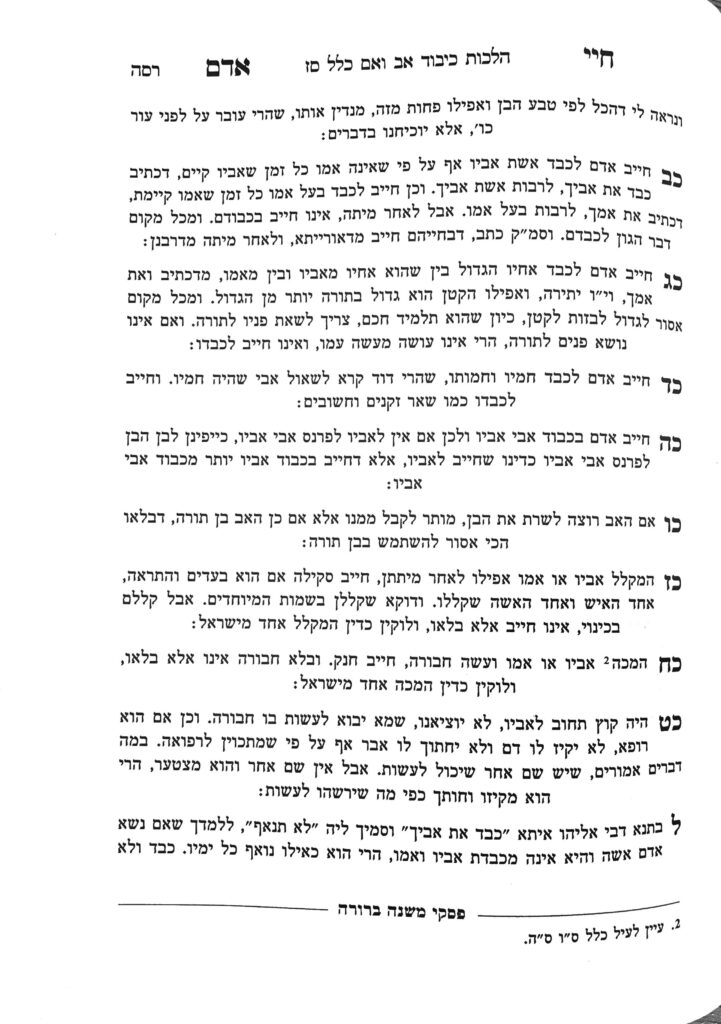We have finished siman 30. The Chayei Adam ends the siman by referring the learner to oisiyos in Sefer Chassidim, where the Sefer Chassidim discusses kibud av v’eim.
In os 343, the Sefer Chassidim quotes the pasuk from tehillim, hinei mah tov umah na’im, sheves achim gam yachad, how good and pleasant it is when brothers dwell together. He writes that the gematria of achim is equivalent to the word banim, teaching us that the pasuk could be praising the harmony of siblings (the pashut pshat) or of parents and children. However, when siblings, a parent and child, or a rebbe and talmid are not in harmony, even if the talmidim are still learning from their rebbe (ie., they do not yet feel compelled to leave the rebbe because of the issue), once they are in discord, it is preferable that they separate. The pasuk praises when the two parties dwell together in peace; when they cannot dwell in peace, the proper form of peace would be for the two parties to separate. As Avraham told Lot, if you go left, I will go right, and so on.
The Sefer Chassidim stresses that the reason why the separation is preferable is because it causes pain and discomfort to remain together. He clarifies that the discomfort is not just to the parent or rebbe, where the chiyuv kavod is the impetus to separate. Rather, it can even be as a result of actions of the father or rebbe which causes the child or talmid pain.
In os 345, the Sefer Chassidim discusses a child who never was able to fulfill the mitzvah of kibud av v’eim, such as the scenario above or an orphan. He writes that when that child has other opportunities to give kavod, such as to a rebbe or older brother, if he performs those mitzvos of kavod well, Hashem will give him schar as though he performed kibud av v’eim as well. When performing other opportunities of kavod well, he demonstrates that he respects and takes seriously the concept of giving kavod, so Hashem assumes that if the child had parents, he would have given the parents kavod as well.
Summary
- It is praiseworthy for siblings, parents and children, and rebbe and talmid to dwell together in harmony. However, if they are not able to dwell harmoniously, it is preferable for them to separate rather than remain in a situation where either party is pained.
- A child who grew up without the opportunity to perform kibud av v’eim can receive reward for the mitzvah by giving proper kavod to other people in their life who deserve kavod, such as an older brother or rebbe.



